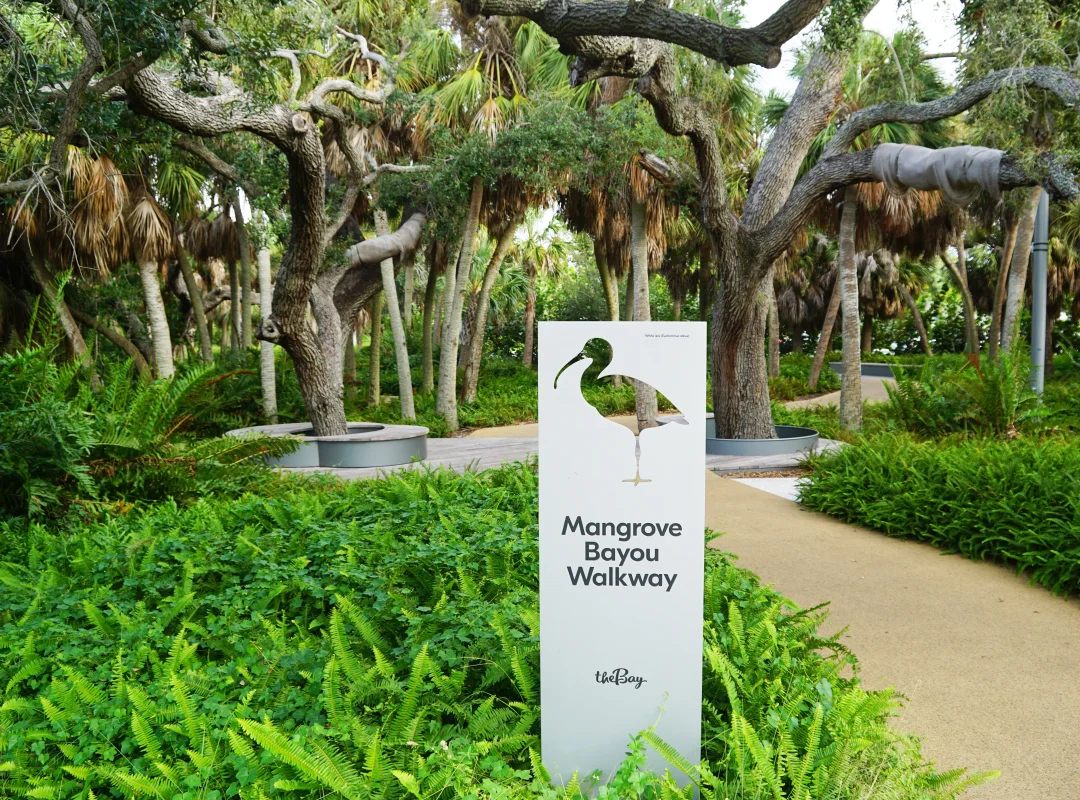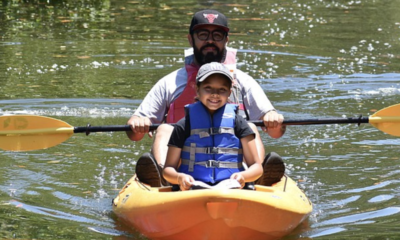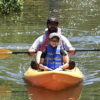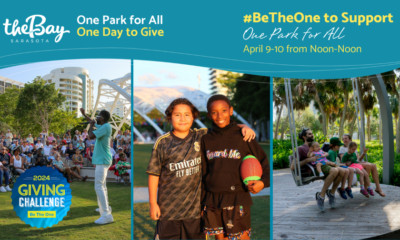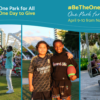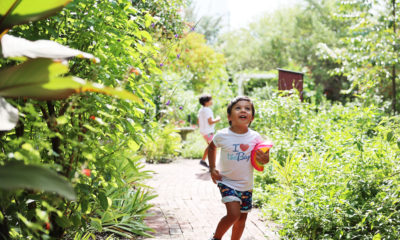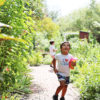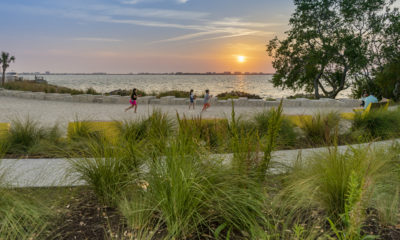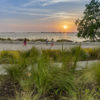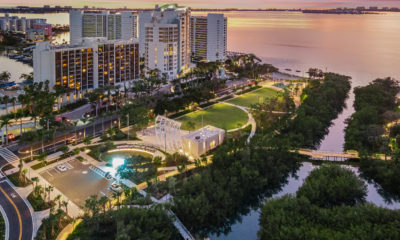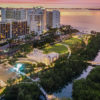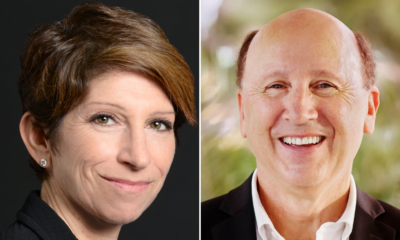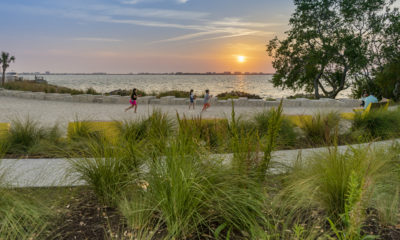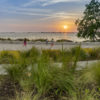Looking Forward, Looking Back: The Bay’s Current and Former CEO Take Stock of the 53-Acre Downtown Sarasota Park
By Eric Garland/Community News Collaborative
This article was originally featured in Sarasota Magazine. View the full article here.
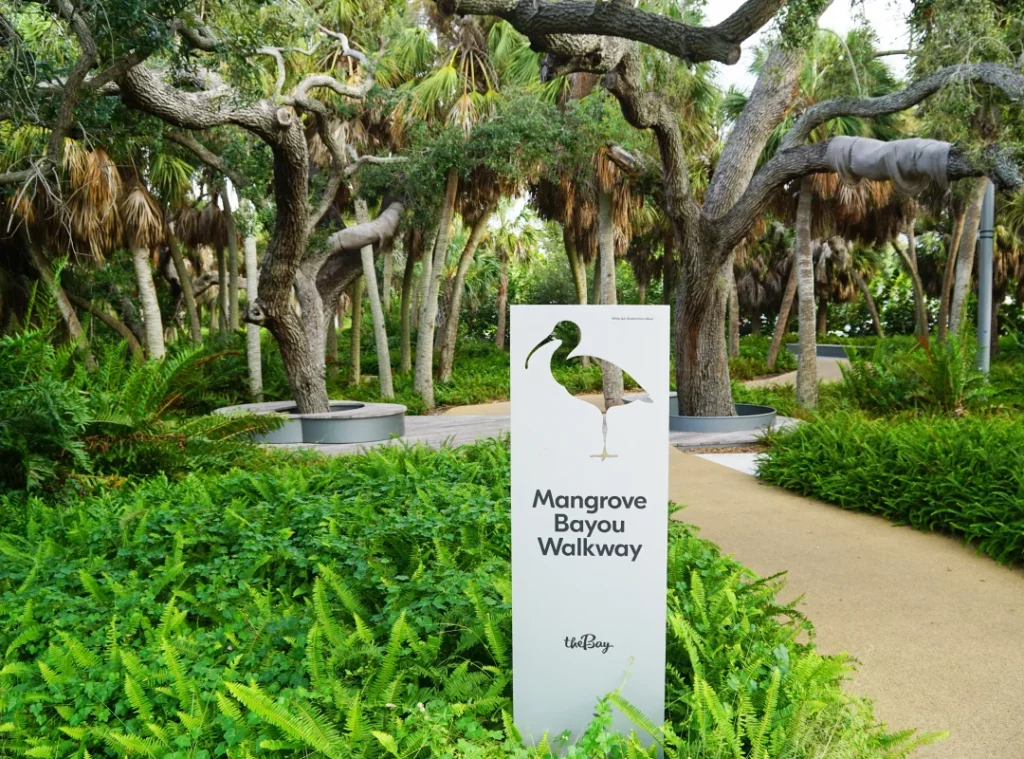
A.G. Lafley helped launch the bayfront destination. Stephanie Crockatt runs it now. Both love it.
The Bay Park, located along the shores of Sarasota Bay in downtown Sarasota, celebrates its first anniversary from Oct. 18-22 with a series of special dates, including a Halloween event, a multicultural festival, Taste of the Bay, a performance from Westcoast Black Theatre Troupe and more.
In its first year, the signature downtown spot has drawn a dedicated following to its initial phase, generally the space between the Van Wezel Performing Arts Hall and Boulevard of the Arts. Performance spaces, shady relaxing spots, a mangrove bayou and more have attracted more than 250,000 visitors to the park in its first nine months, whether for a quiet stop or to take part in any number of the 550-plus scheduled events there.
Phase Two, in years to come, will expand into the footprint of the Van Wezel’s parking lot, which will one day also be occupied by a new performance site (with parking below). The Canal District, which will be oriented toward water activities, and an event lawn with a trail that swings out over the bay are other highlights that are still to come.
Funded by county and city tax revenue and private donations, Sarasota County and the city of Sarasota have each made payments totaling $2,341,525 in tax-increment funding to The Bay since fiscal year 2021, with about $2.22 million from each expected in fiscal year 2024.
The Community News Collaborative chatted with The Bay’s founding CEO, former Procter & Gamble chairman, president and CEO Alan G. (A.G.) Lafley, and current CEO Stephanie Crockatt, who was previously executive director of the Buffalo Olmsted Parks Conservatory and assumed the office from Lafley last spring, to talk about the past, present and future of the 53-acre space.
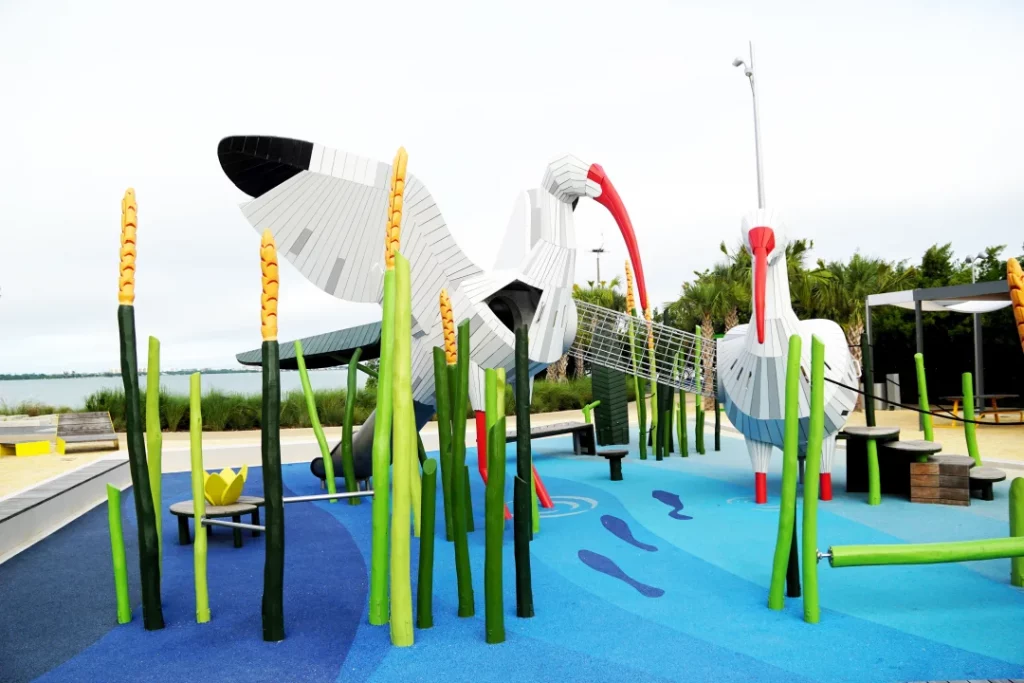
A.G., you were there at the beginning of this project, and now you can actually walk through the park. How does that make you feel?
A.G. LAFLEY: It makes me incredibly happy because I believe we delivered on the main objective, which was creating, designing, building, and—most importantly—activating and programming one park for all. And this park is truly one park for all.
How do you know that?
LAFLEY: You just have to walk through the park and look at the range of ages and the diversity of ethnicities and races, or listen to all the different languages being spoken there. Look at all the different compositions of households, which have changed dramatically in the last 30, 40, 50 years in America. You can see that like no other place in Sarasota. I’ve been coming here since 1998 and have owned a place here since 2004. Everyone’s here because it’s accessible, it’s open, it’s free, and most importantly it’s welcoming.
Stephanie, what are you most looking forward to as you head into your own first year?
STEPHANIE CROCKATT: I’m going to be focusing on building the conservancy, the steward that is going to take care of this treasure in perpetuity. We are going into Phase Two, as well, but my main goal is to make sure that this organization is sound and operating so that we are fulfilling all of the guiding principles that we’ve set forth.
What can people look forward to in Phase Two?
CROCKATT: Phase two is a compilation of four projects, and they will be happening somewhat simultaneously. Some will rise in priority because we’re at different stages of design. There’s the Sunset Pier project and the Cultural District project that runs along Tamiami Trail and connects all of the wonderful historic buildings on site. We will have the resilient shoreline, which is going to run along the water up by Van Wezel into the Canal District, and the Canal District itself, at the north part of the site, is the fourth segment. Right now, we see that the Cultural District is further along in design.
The listening segment of the park’s planning process was deep. What did you hear from that process that surprised you?
LAFLEY: What mattered was listening carefully, observing carefully and seeking to understand what all of the individuals in the community really wanted. It was crystal clear, and they kept saying it over and over again. They wanted accessibility to their bay, Sarasota Bay. They wanted to be able to come onto this beautiful 53-acre site,. They wanted to see it transformed in a way that they, their families, their friends, their neighbors, and the people who come to town to visit them could use and enjoy.
What has surprised you the most about the park?
CROCKATT: There are so many different little nooks and individualized areas. I mean, if you look at the Garden Club and the Fountain Garden, that is its own little ecosystem. And if you look at the beach and the playground, it’s its own little ecosystem, too. [Then there’s] the Mangrove Bayou and all of the environmental attributes, the historic district, the cultural district. I mean, it really is a fabulous collection of individual [areas] that are knitted together beautifully.
A.G., did you have any regrets when you stepped aside?
LAFLEY: No. Our focus all along has been to help make The Bay sustainable in every way: conserving the land, environmental restoration and environmental sustainability, but also design sustainability, build-out sustainability, operational sustainability, financial sustainability. So this is a baton passing.
What are some of the biggest challenges the future holds for The Bay in that regard?
CROCKATT: Changing this parking lot into a park, there’s been an incredible amount of pavement that has affected water quality, runoff and storm surge. We have been able to take care of about 75 million gallons of water, just in Phase One, that have been able to go back into the bay in a cleaner capacity. That is something to be incredibly proud of. But there is a huge amount of water that is coming into the bay that is not cleaned or reclaimed. I hope this park is going serve as a great big kidney at some point, and it’s going to be filtering [clean] water into the bay.
What’s it like to be CEO of an organization that responsible for something designed to last forever?
CROCKATT: It’s all grounded in good stewardship and sustainability. I know that there’s a huge charge here to be sustainable in every way, and that means operationally, environmentally and financially. In coming into this position, I was focused on historic properties. They’ve been designed generations prior, so I got to see what something that lasted for more than 150 years looked like. I can only imagine how beautiful and wonderful this property will be in 150 years. And it’s being done right. Doing it in phases is absolutely the right way to go. It will hopefully be an amazing place in everyone’s heart as the generations go by.
What’s your favorite part of the park?
LAFLEY: Ooh, that’s a really good question. My favorite times in the park are first thing in the morning, when the sun’s coming up, and sunset. I mean, where can you get 300-plus sunsets [a year] like the ones we get over Sarasota Bay? My favorite place in the park is probably on the the walking bridge, the Bayou Walkway. It’s so peaceful there. And talk about a view—if you look west through that mangrove, across that bayou, into that opening into Sarasota Bay, it’s incredible.
CROCKATT: I really love the mangrove walk. I’m sure everybody says that unless they’re 5 years old, and then they probably like the playground! I love the features that have been put in there as far as the seating, the swings, just the way that you can connect with nature in a very quiet and passive way. It’s therapeutic. It doesn’t feel like you’re in an urban environment, and I think that is something special that we’ve captured.


